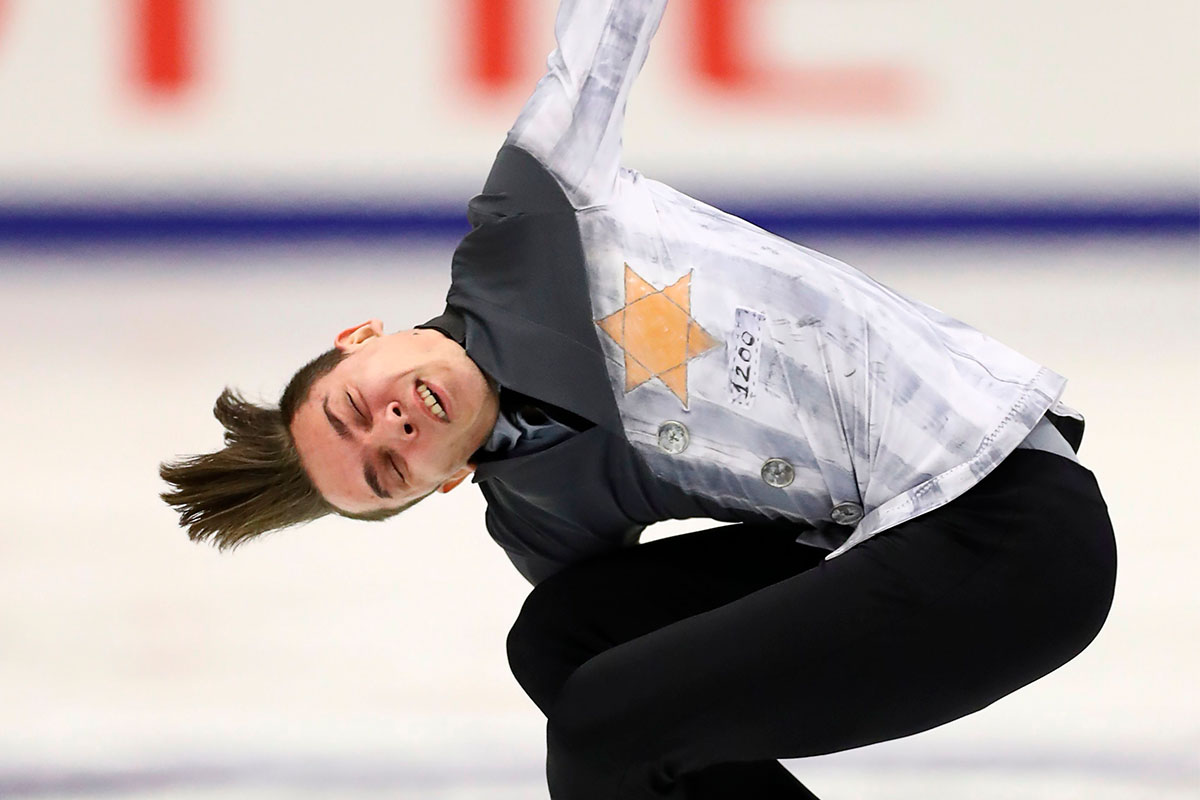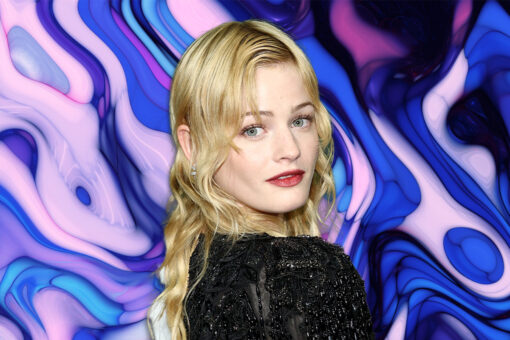There’s nothing like the changing of the seasons to make you want to curl up on your couch and spend your weekends watching athletes at the top of their game fight for the championship.
I’m talking, of course, about the Grand Prix of Figure Skating.
I’ve loved the sport since I was 5 years old, engrossed in the Nancy Kerrigan/Tonya Harding rivalry like any super normal child. Following the 2018 Olympics in Pyeongchang, I got swept in the thrill of Mirai Nagasu nailing triple axels, the drama of Tessa Virtue and Scott Moir’s passionate Moulin Rouge free dance. Before I knew it, I was traveling to Canada for ice shows. I love the narrative, the spectacle, and the joy. It’s a comfort and escape, as sports and fandom often are.
But as with any sports fandom, there will be situations where you find yourself torn between your love of the thing and its many institutional problems being shown in stark relief. Skating is not without many discomforts, but the one that, as a Jewish fan of the sport, I couldn’t get out of my head during the last bout of competition was the prevalence of programs invoking the Holocaust, and specifically, using the score from Schindler’s List.
The actual programs are a mixed bag. I could watch Satoko Miyahara skate to anything, but her original costume choice, featuring a Star of David fashioned from back straps, was maybe not the most respectful option (she later competed in a version of the dress without the star). Other interpretations feel like more explicitly cheap exploitation of tragedy, most notably skater Anton Shulepov’s costume, depicting himself as half-Nazi guard, half-concentration camp prisoner, complete with yellow star.
Shulepov’s costume is obviously very bad, but even watching the footage from the Skate America performance from Jason Brown, a Jewish skater who clearly understands the material, is still uncomfortable. Brown’s program is very moving and as tasteful as a Schindler’s List skate could possibly be, but as a fan, it’s hard to negotiate the whooping and hollering, cheering for his landed jumps and spins, in concert with that music choice. Of course, this isn’t Brown’s fault, and there’s a case to be made for respectful tribute performances connecting people with a horrifying history.
Jewish skating fans aren’t a monolith, and other fans may appreciate or defend this music choice when done with tact, or by someone whose family or community was impacted by the atrocities in question. But scrolling through feeds of Grand Prix livetweets, I know I’m not the only one with messy, complicated feelings about these programs, and that is enough to merit a conversation in the sport about programs that depict — or worse, exploit — mass tragedy moving forward. I don’t know what the answer is, but it isn’t “everyone should be allowed to do it or no one should do it.” Nor, in a sport that has been unfair to skaters based on their race, socioeconomic status, faith (more on this later), or size while historically rewarding culturally appropriative programs, is the answer policing skaters wishing to share their own histories or cultures or faiths, no matter how grim or perhaps incongruous with a judged sport.
Only a little bit of depressing YouTube rabbit hole-ing confirmed what I’d expected, that Schindler’s List as a skating program has been, well, a thing for a while. Schindler’s List has been a popular program music choice for figure skaters since 1994, when, just months after the film’s release, skaters like Katarina Witt and Paul Wylie were skating to its score.
In the years that followed, skaters from all over the world would re-interpret the music to varying degrees of success, in competition and exhibition. There are performances like Shulepov’s that take the context too literally to the point of offensive exploitation, and those who divorce the piece so far from its original context that it also feels, well, wrong, such as this 2018 Art on Ice performance where Stéphane Lambiel skates to an interpretation of the score while an acrobat in a cow-print unitard performs a pole routine.
Schindler’s List is what is known in the figure skating world as a “warhorse,” program music that is ubiquitous and reliably popular with skaters as well as judges (other classic examples of warhorses include Carmen, Phantom of the Opera, and Moulin Rouge, which honestly makes the inclusion of Schindler’s List all the more discomfiting). Musical pieces become warhorses for all kinds of reasons — they’re aesthetically beautiful, they’re dramatic, they tell a compelling story. John Williams’ score, as rendered by haunting piano or the gifted strings of Itzhak Perlman, is achingly beautiful.
Figure skating tasks itself with trying to hold so much as a competition. It’s a judged sport, assessing precision and complex jumping passes, but at its core, it also resonates so strongly with fans because the best performances tell compelling stories about love or loss. It’s certainly why I became such a diehard fan of the sport so quickly. But no matter how gifted a skater may be, that does not absolve them of the responsibility with the stories they tell. No music is beautiful enough to exist in a vacuum. As artists, skaters, and their teams — including choreographers, costume designers, coaches — must recognize context and consider their impact.
And there’s certainly no excuse for a skater making a costume of a concentration camp uniform, let alone the ISU including Shulepov’s horrorshow outfit in consideration for their end-of-year “Best Costume” awards on their website. For the musical choice to be popular is one thing, but to see such an offensive costume rewarded by the governing body was insulting.
Following an outcry from fans and a statement from the Anti-Defamation League, the ISU replaced the costume on the ballot with Shulepov’s innocuous short program outfit and claimed the insensitive costume was added to the ballot “by error,” which sure feels like the large sports governing body version of “sorry, I was hacked!!!!!!” Even if we take the ISU at their word, it still means someone at the ISU saw the costume and failed to consider the potential backlash of rewarding a skater for dressing up as a concentration camp prisoner.
This latest controversy is a reminder that the sport has far to go in terms of dealing with its cultural incompetencies. The ISU placing Shulepov’s costume in award contention reminded some skating fans of the time a horrific “aboriginal” themed program by two white Russian ice dancers made the Olympic podium, and of the 2011 case of Emirati skater Zahra Lari, who received a deduction in her score for wearing a hijab on the ice. Although the ISU thankfully changed the rules around the religious headwear shortly after, for some fans, it’s another reminder of the skating body’s hypocrisy.
I love international sporting competition because it’s a means for people to come together, even for a few minutes, and appreciate achievement and beauty and joy across borders. There are so many stories worth telling on the ice. The ISU, skaters, and fans should be encouraged not just to educate themselves about the impacts of insensitive costumes or programs and how to avoid them, but to accommodate and welcome skaters of different cultures and faiths while encouraging authentic, beautiful performances that draw more of the world in rather than marginalize, exploit, or exclude.
Header Image by UNKO KIMURA-MATSUMOTO/AFP via Getty Images



